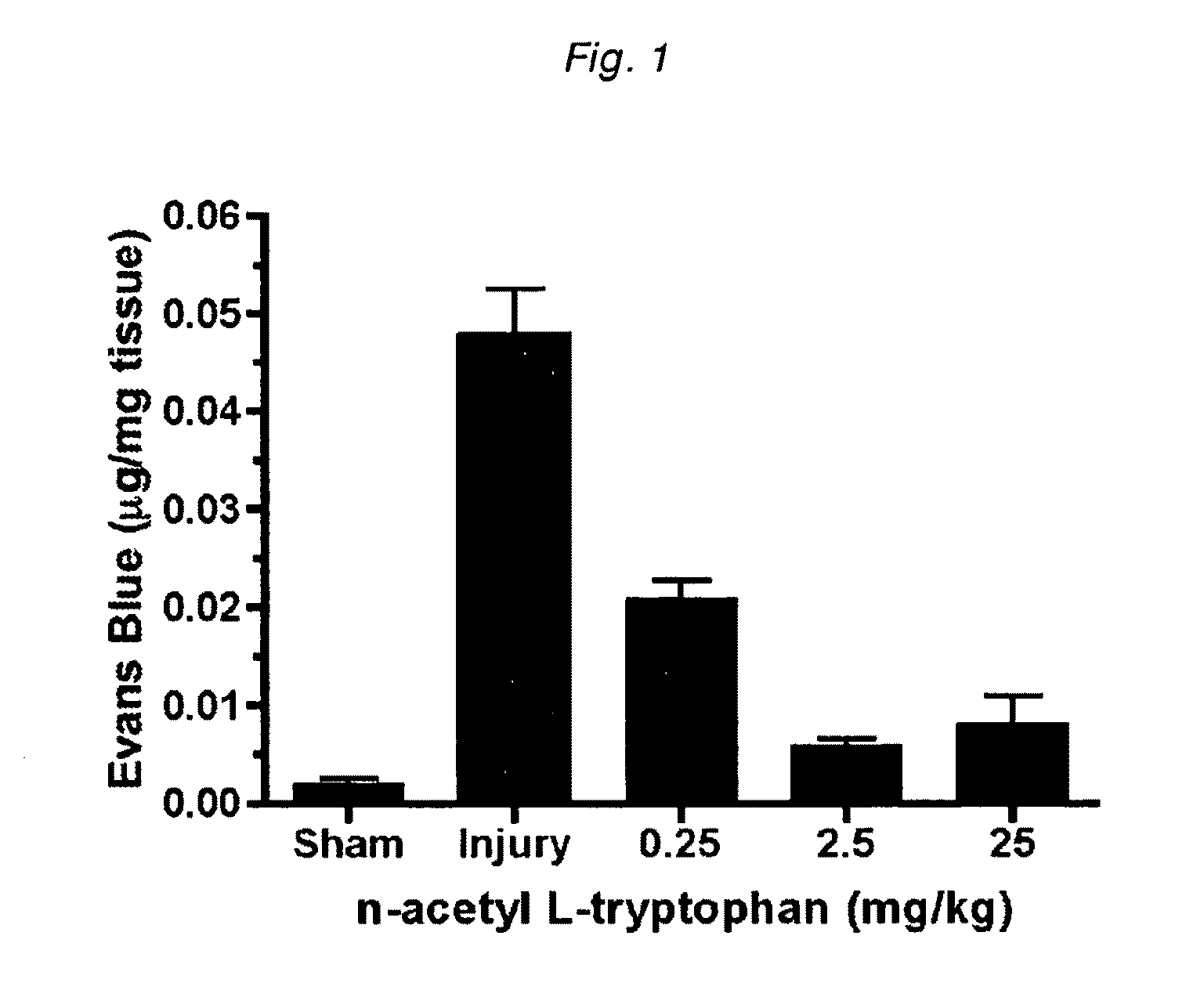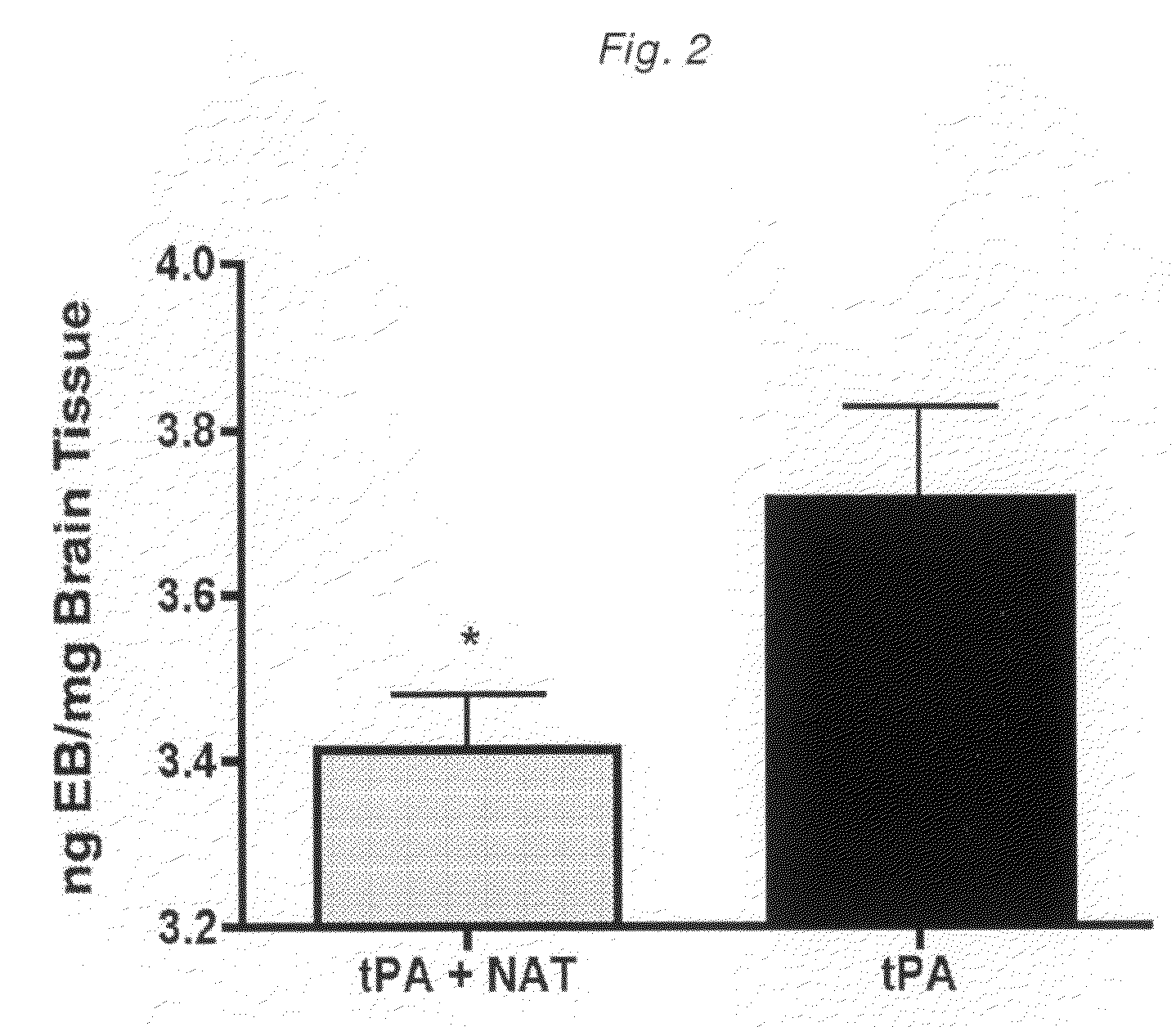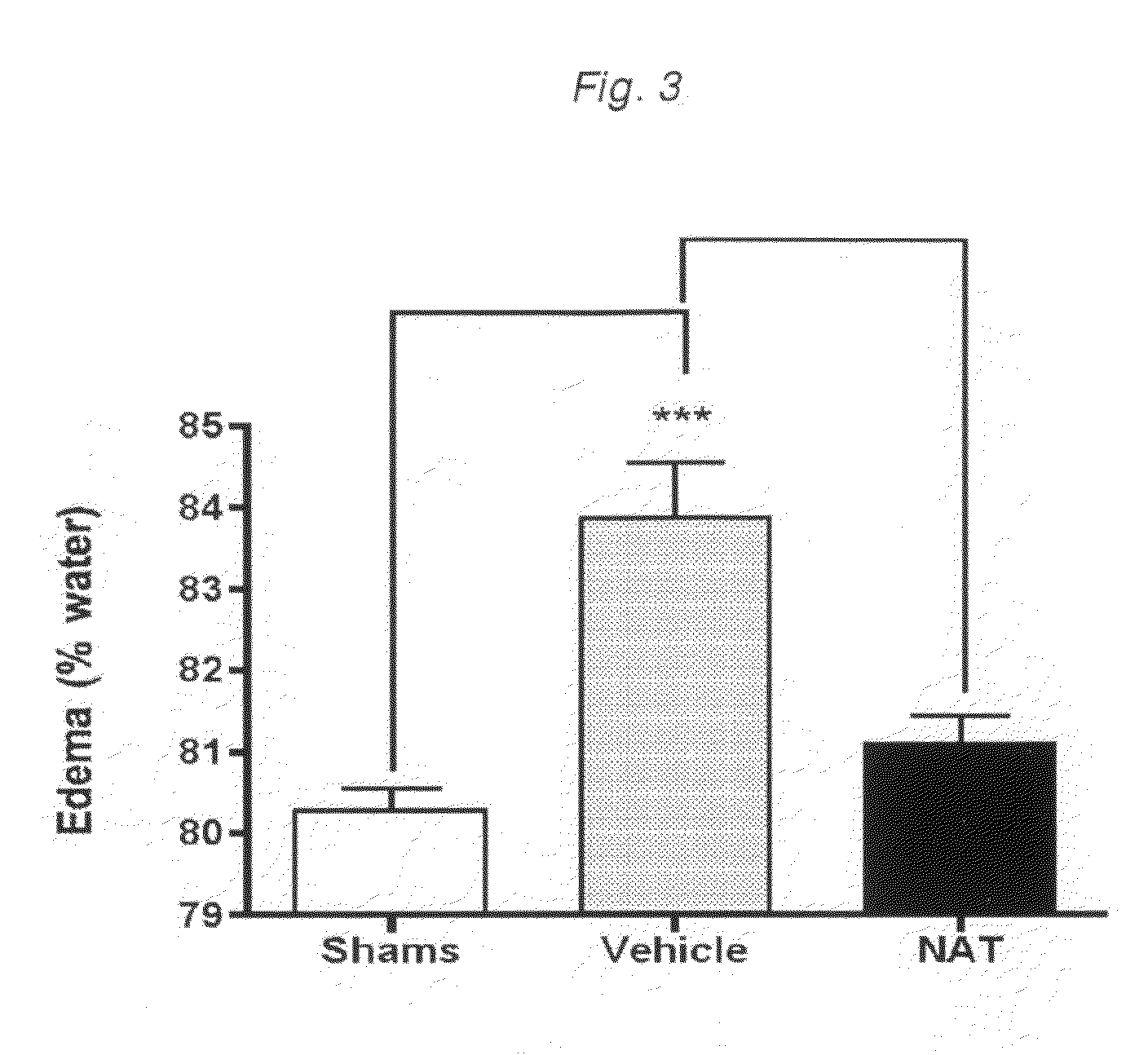Method and composition for reducing reperfusion injury
- Summary
- Abstract
- Description
- Claims
- Application Information
AI Technical Summary
Benefits of technology
Problems solved by technology
Method used
Image
Examples
example 1
[0188]Administration of N-acetyl-L-tryptophan Closes the Blood Brain Barrier Following Injury
[0189]A number of commercially synthesised substance P (NK1) receptor antagonists are available from standard scientific chemical suppliers.
[0190]We chose to use the compound N-acetyl-L-tryptophan (NAT). Administration of N-acetyl-L-tryptophan was found to close the blood brain barrier following injury, as evidenced by a reduced leakage of Evan's blue dye into the brain tissue. This closure of the blood-brain barrier occurred in a dose-dependent manner, as shown in FIG. 1.
example 2
[0191]Administration of N-acetyl-L-tryptophan Prevents the Increased Permeability of the Blood Brain Barrier Induced by Injection of tPA
[0192]Administration of N-acetyl-L-tryptophan (NAT) at a dose of 10−5 mol / kg also prevented the increased permeability of the blood brain barrier induced by injection of tPA (Actilyse) alone to a naïve (uninjured) animal (FIG. 2), supporting the concept that NK1 antagonists are a useful adjunctive therapy to prevent tPA induced blood brain barrier opening.
example 3
[0193]Administration of N-acetyl-L-tryptophan Reduces Odemia Following Ischaemia / Reperfusion Injury
[0194]Having demonstrated that N-acetyl-L-tryptophan maintains barrier integrity both after injury and after administration of tPA, we sought to examine whether the administration of the NK1 antagonist would also reduce the oedema formation that usually accompanies blood brain barrier opening.
[0195]To this end, anaesthetised rats were subject to 2 hours reversible stroke using the intraluminal thread model of middle cerebral artery occlusion. At 2 hours, reperfusion was initiated by withdrawing the thread and following a further 2 hours, N-acetyl-L-tryptophan (10−5 mol / kg) was administered by intravenous injection. There was a significant increase in oedema at 24 h following ischaemia / reperfusion injury. This was significantly attenuated by the administration of N-acetyl-L-tryptophan (FIG. 3).
PUM
| Property | Measurement | Unit |
|---|---|---|
| Flow rate | aaaaa | aaaaa |
Abstract
Description
Claims
Application Information
 Login to View More
Login to View More - R&D
- Intellectual Property
- Life Sciences
- Materials
- Tech Scout
- Unparalleled Data Quality
- Higher Quality Content
- 60% Fewer Hallucinations
Browse by: Latest US Patents, China's latest patents, Technical Efficacy Thesaurus, Application Domain, Technology Topic, Popular Technical Reports.
© 2025 PatSnap. All rights reserved.Legal|Privacy policy|Modern Slavery Act Transparency Statement|Sitemap|About US| Contact US: help@patsnap.com



